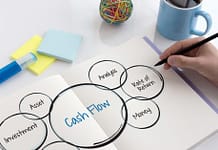The design of a User Experience (UX) encompasses the development of new digital products. A User Experience (UX) strategy is a plan for aligning a company’s brand identity with the desired user experience at each customer touchpoint. This strategy should be in place before any design work begins in order to be most successful.
A well-defined user experience plan is just as crucial as your company’s mission statement. A user experience strategy aids UX teams in the conceptualization and creation of new digital products.
Designers rely on a combination of tried-and-true UX design methodologies and tried-and-true business tactics to create products that satisfy both users and company stakeholders.
Let’s have a look at what UX strategy is and how to create a successful UX strategy for any product or service you’re trying to create.
What is UX Strategy?
A User Experience (UX) is the deliberate attempt to impact how your audience feels when they use your product or service is referred to as user experience (UX). Experience refers to how something operates when a person interacts with your products or services.
UX is not about the features or even the potential benefits of your product. UX is far more sophisticated than that. It is all about the intangibles, the ideas, and sentiments you can elicit from your clients that eventually lead to satisfaction and brand loyalty.
A User Experience (UX) strategy is a plan that matches UX goals with the product and organizational goals. It outlines how the organization wants its consumers to engage with its brand and products and which is highly significant for an e-commerce business. Therefore UX designers constantly make decisions with the business strategy and its users in mind.
In case you are looking out for offering an amazing User Experience to your upcoming products, hiring a professional Agency would be a smart approach.
The Importance of a User Experience Strategy
To be sure, a design thinking approach is primarily concerned with the user, and with good reason. However, without a UX design strategy, designers lose sight of the brand and its objectives. A UX strategy focuses a designer’s attention on the organization and the user in order to harmonize product and brand experiences.
A UX strategy guarantees that the company and its stakeholders have a say in the research, design, and usability testing processes.
How to Create An Effective UX Strategy for Your Company
As the foundation of your product or service design, you should use the User Experience strategy. It will take a long time and a lot of money to get to the final result. You must spend your money judiciously.
When developing a UX strategy, an organization should consider the following factors:
- How does UX design fit into product strategy?
- How user experience relates to business goals
- Organization’s definition of user experience with respect to the brand.
- User personas based on qualitative and quantitative data, including habits, expectations, and user needs
- Analyze your competitors
- Impact of Market trends on the user experience.
- Current product performance in comparison to future aims
- Defining, prioritizing, and carrying out product goals, objectives, and key performance indicators (KPIs).
- Procedures for doing user research
- Findings must be communicated to stakeholders.
The process of UX strategy can be broken down into the five steps shown below:
1. Define your Objectives
The first step towards the User Experience strategy you need to set your goals which should be SMART that is Specific, Measurable, Actionable, Realistic, and Timely in nature.
You can establish a goal of streamlining functionality and minimizing needless features in order to get right to the point and solve the problem.
You must aim to optimize the user journey for speed, reducing the time it takes from initial discovery to utilizing your product.
You can also establish a goal of making the product aesthetically stand out, which is important when it is often seen in the context of its competition.
2. Research
Next in line for UX design strategy involves finding out the research tools to evaluate your data. You should do research in three areas: users, stakeholders, and competitors.
If you want help with RnD, you should approach web development experts like the best website development company in Jaipur for effective reports and research.
3. Brainstorming and Wireframing
After you have a firm grasp on what your customers want from your product and the resources available to develop it, you must start sketching some ideas through brainstorming and creative approaches.
Consider the following questions for your team:
- What exercises will you utilize to generate ideas?
- Will you begin with a pen and a piece of paper? What design software programs are you familiar with?
- Is it necessary for your team to use online software that allows for remote work?
- Do you have a favorite wireframing and prototyping tool?
4. Prototype Designing and Testing
It’s time to think about how you’ll test your designs and how you’ll analyze the outcomes. Consider the following points:
● How will you find test subjects?
● Are your designs suitable for your development team’s requirements?
● Are the exams going to be moderated or unmoderated?
● How will you do user and usability testing?
● Will they be completed remotely or on-site?
● Is it possible to do testing in-house, or do you need to hire a testing firm?
● What methods will you use to evaluate and present the data you collect?
● What measures will you use to determine success?
● Are you collecting qualitative as well as quantitative data?
5. Be prepared to iterate
A UX strategy isn’t complete until it includes a process for revising and improving your designs in response to user input. Even after the UX designs are released to the public, most finished products go through many design cycles and are regularly re-tested and revised. Technology and UX trends change all the time, and the best design teams keep their products up to date.
Make sure your UX design plan addresses how to use the data gained during user testing to enhance the user experience, as well as how to maintain the product current and in line with consumers’ expectations. The more you prepare to remain on top of all of these factors now, the less effort you’ll have to deal with them in the future.








